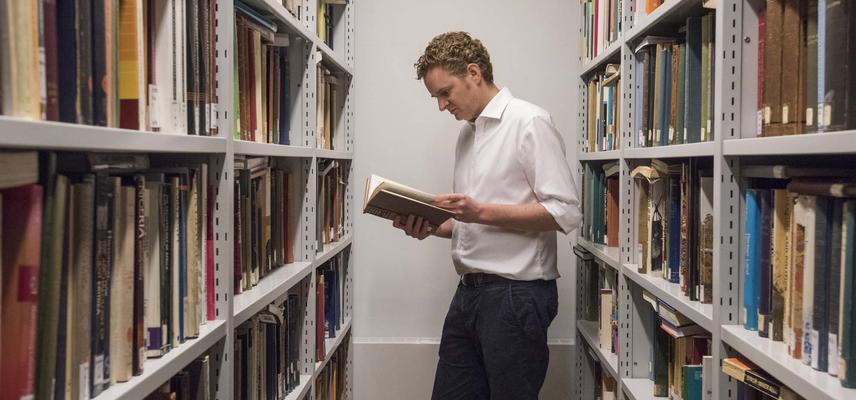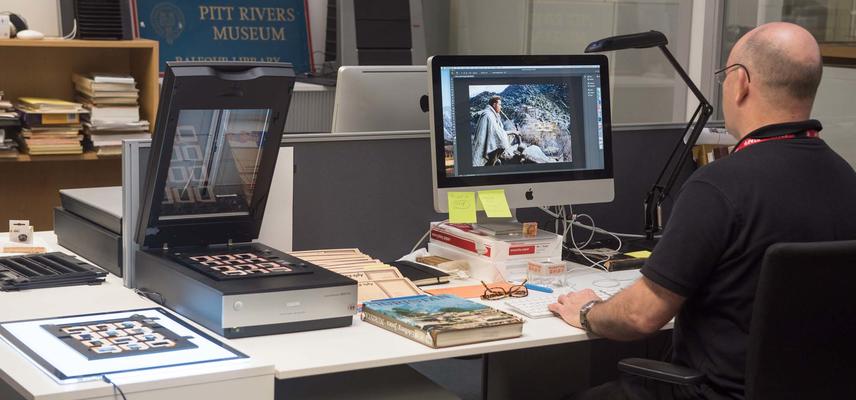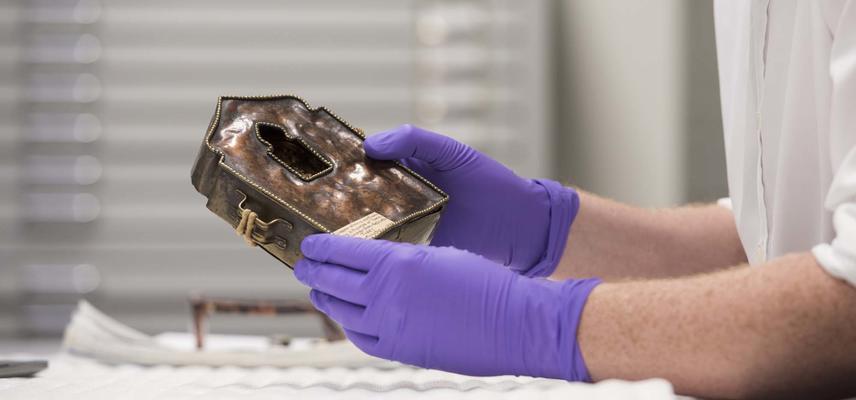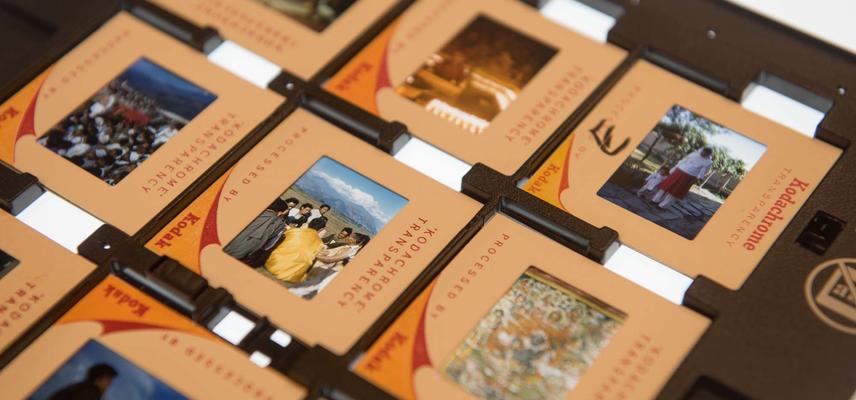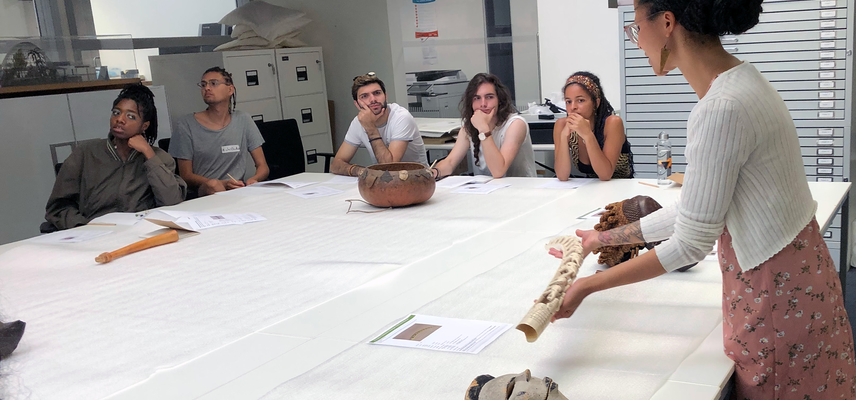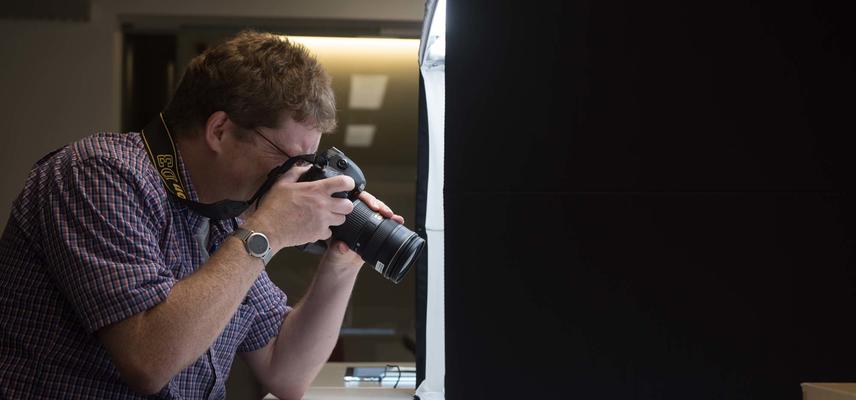Using our collections
Important information regarding access to object collections in 2025-6
Please note that our offsite stores (object collections only) will be inaccessible for the remainder of 2025 and a large part of 2026. It is highly unlikely that access can be provided to material stored offsite during this time. However, please get in touch to discuss your research requirements and where possible we will offer alternatives to support your work.
Help reduce the carbon impact of research. Ask about our virtual research visits.
Contact us for research visit enquiries
Object collections: objects.colls@prm.ox.ac.uk
Photograph, film, and sound collections: ms-photo.colls@prm.ox.ac.uk
Archive and library collections: library@prm.ox.ac.uk
Collections online
Our facilities
The Balfour Library
Photographic services
Loans
Documenting and digitising fieldwork
Research room and documentation
Research photography
About our collections information online
We would like to take this opportunity to thank all those who are helping us in the time-consuming work of data cleaning our Collections Online database.
The University has invested in an improved Collections Management System (CMS), Digital Asset Management System (DAMS) and Collections Online platform for the Museum. In order to migrate our collections records into these new systems, we have undertaken significant data cleaning to allow greatly improved search ability of our collections, both internally and online. The ongoing process of updating and improving descriptions and other information for our 510,000 records requires our Collections team to work methodically through all records by hand.
The Museum's Collections Online is populated by the in-house Collections Management System (CMS) and Digital Asset Management System (DAMS) and is updated daily. Any changes made to the CMS or DAMS should appear in Collections Online the next day.
The Pitt Rivers Museum's Collections Online have always contained a cultural sensitivity warning. This now takes the form of an option to continue seeing such warnings or none at all. These preferences are stored using cookies for the whole browser session. If a user chooses to be warned about content, images are blurred until they select to open the record. This approach has been used for some years in Australia and is considered best practice when dealing with sensitive ethnographic collections. The approach does not impede the online access for anyone who does not wish to see warnings but does offer a more culturally safe environment for our many indigenous community partners, who do not wish to stumble on upsetting or culturally restricted items without first being told what to expect. We consider this approach to be a more respectful and inclusive approach to collections access online, whilst maintaining our reputation for unrivalled deep research access to our entire collection and its historical documentation.
The initial entries, including the description fields on our CMS, were created from the original handwritten accession book entries. We now have a system which has a specific sensitivity field, where we can explain any sensitivities in detail. When the sensitivity field on the CMS is populated, it triggers a blurring of the image in the online database. However, the image is visible to users who want to see it.
There are multiple reasons why an image might not be visible. In order of most likely:
- We do not yet have images for all objects in the collection. Our aim is for all objects to be digitised but this is a huge project requiring staffing and funding resources.
- The quality of the image does not meet the basic standard necessary for online viewing.
- The image shows human remains,
- The record has been marked as too culturally sensitive for general access.
- We have received a formal request from the originating community not to show the image online.
- There are legal/copyright reasons why the image cannot be shown.
If you are looking for an image in our online database and are told that the image does not exist, this means that the item has not yet been digitized. However, if you are looking for an image and are told that the image exists but is not available, please contact the Museum.
Funding your visit
If you are applying for grant funding to work with the Museum’s collections, please contact us in advance to check that this will be possible within your timeframe and to quote for any photographic costs.
Access for visitors with additional needs
Parking spaces can be provided for researchers with restricted mobility, if advance notice is given. Level access to the Museum is via the south entrance on Robinson Close, off South Parks Road.
Access to the research room on the first floor is either via lift or stairs. To ensure suitable arrangements are made to view material, please notify staff in advance if you have restricted mobility or other needs.
